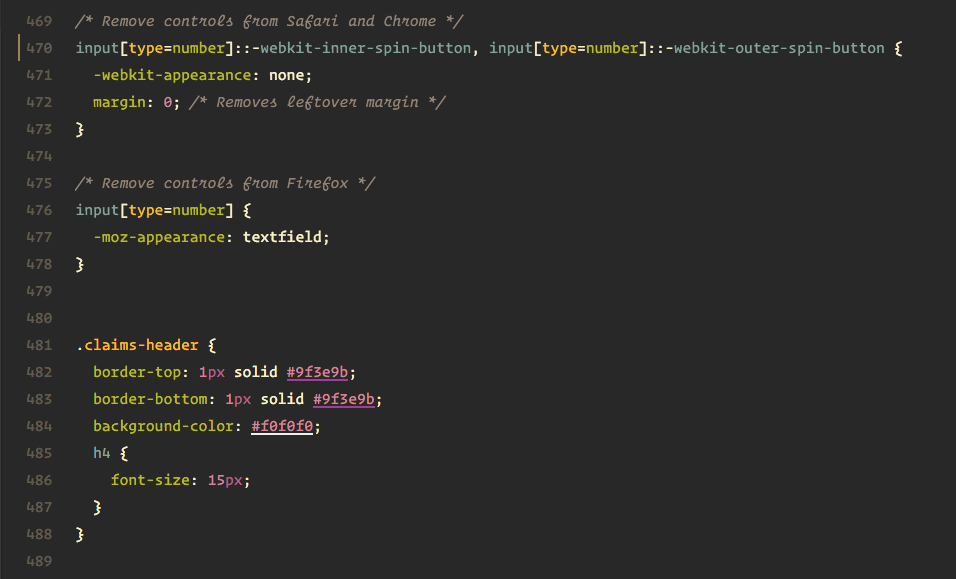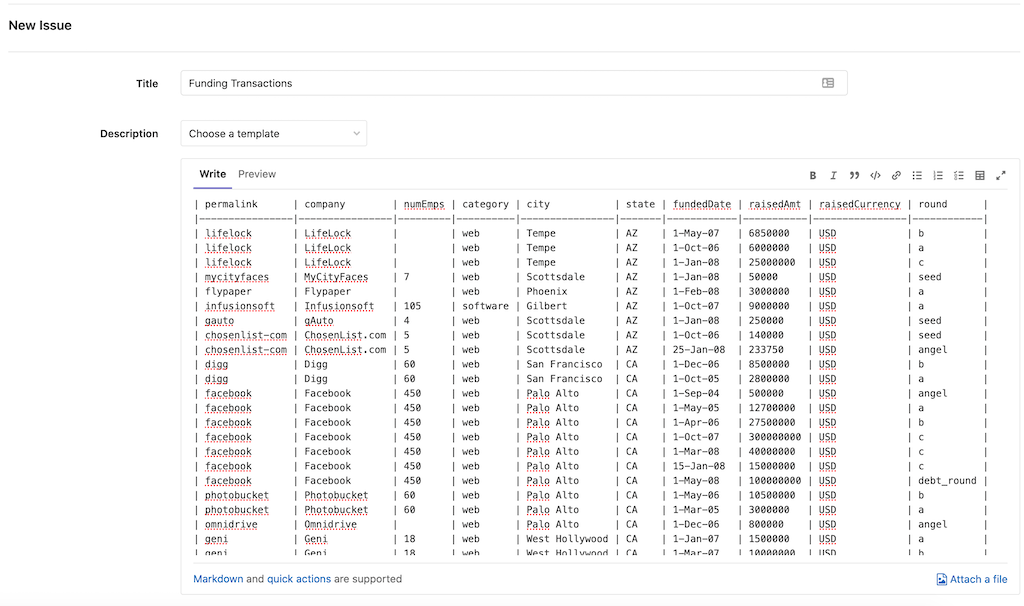You can tell GitHub to ignore (or escape) Markdown formatting by using before the Markdown character. Let's rename.our-new-project. to.our-old-project. For more information, see Daring Fireball's 'Markdown Syntax.' Further reading. GitHub Flavored Markdown Spec 'About writing and formatting on GitHub' 'Working with advanced formatting'. Context / Purpose So.! I'm a data analyst in an AWS Redshift SQL environment. Tagged with data, sql, vscode. ReadMe's React-based syntax highlighter. Contribute to readmeio/syntax-highlighter development by creating an account on GitHub. Simple mail sending with syntax-mail api. If nothing happens, download the GitHub extension for Visual Studio and try again. A quick outline of a README.md. GitHub Gist: instantly share code, notes, and snippets.
- Github Readme Syntax Highlighting
- Git Readme Formatting
- Readme Syntax Github Tutorial
- Github Md File Syntax
Update 2016: This tutorial is out-of-date. See the repository for alexpeattie.com and the associated README to see how I do it now.
A few people have asked me how I do the Github-style syntax highlighting on this site. Here’s an example Ruby script with highlighting:
This how-to explains my setup on Middleman (which this site is built on), but it should be applicable to any site using Pygments for syntax highlighting.
To enable basic syntax highlighting, we need to add the middleman-syntax gem to our Gemfile:
and activate it in our config.rb:
We’ll also turn on the lineanchors option, which we’ll need for line numbering (see below).
Fenced code blocks
Github Readme Syntax Highlighting

The first feature we’ll add is fenced code blocks, a feature of Github Flavored Markdown. This allows us to conveniently specify the language (and thus, the Pygments lexer) of our code:
We’ll need to change our Markdown pre-processor to Redcarpet which supports fenced code blocks. We need to add:
to our Gemfile and put the following into our config.rb:
Github highlighting color scheme
Next we’ll add some CSS to match Github’s color scheme: https://github.com/richleland/pygments-css/blob/146708f9003299106baf05987abf393eae4424fc/github.css
We have to make one small change, .hll needs to be replaced with .highlight
Line numbers
The last thing we’re missing are line-numbers. We’ll implement this in pure CSS, using CSS counters:
Notice the user-select: none; - this ensures that when the code is selected, the line numbers won’t be selected too, which makes copying and pasting a lot more convenient.
CSS counters will work fine for ~95% of users - and older browsers will degrade gracefully (they just won’t show any line numbers).
Good documentation is key to the success of any project. Making documentation accessible enables people to learn about a project; making it easy to update ensures that documentation stays relevant.
Two common ways to document a project are README files and wikis:
README files are a quick and simple way for other users to learn more about your work.
Wikis on GitHub help you present in-depth information about your project in a useful way.

It’s a good idea to at least have a README on your project, because it’s the first thing many people will read when they first find your work.
Creating your README
When you create a new repository though GitHub, select “Initialize this repository with a README” unless you plan to import an existing repository.
Your README.md file is now available for editing in your brand-new repository. Your project’s name is at the top, followed by any description you chose to include when creating the repository. READMEs are easy to modify, both on GitHub or locally. Check out the Mastering Markdown guide to learn more about how to modify the text within the file after you’ve made it.
Formatting your README

READMEs generally follow one format in order to immediately orient developers to the most important aspects of your project.
Project name: Your project’s name is the first thing people will see upon scrolling down to your README, and is included upon creation of your README file.
Description: A description of your project follows. A good description is clear, short, and to the point. Describe the importance of your project, and what it does.
Table of Contents: Optionally, include a table of contents in order to allow other people to quickly navigate especially long or detailed READMEs.
Installation: Installation is the next section in an effective README. Tell other users how to install your project locally. Optionally, include a gif to make the process even more clear for other people.
Usage: The next section is usage, in which you instruct other people on how to use your project after they’ve installed it. This would also be a good place to include screenshots of your project in action.
Contributing: Larger projects often have sections on contributing to their project, in which contribution instructions are outlined. Sometimes, this is a separate file. If you have specific contribution preferences, explain them so that other developers know how to best contribute to your work. To learn more about how to help others contribute, check out the guide for setting guidelines for repository contributors.
Credits: Include a section for credits in order to highlight and link to the authors of your project.
License: Finally, include a section for the license of your project. For more information on choosing a license, check out GitHub’s licensing guide!
Your README should contain only the necessary information for developers to get started using and contributing to your project. Longer documentation is best suited for wikis, outlined below.
Creating your wiki
Every repository on GitHub comes with a wiki. After you’ve created a repository, you can set up the included wiki through the sidebar navigation. Starting your wiki is simply a matter of clicking the wiki button and creating your first page.
Adding content
Wiki content is designed to be easily editable. You can add or change content on any wiki page by clicking the Edit button located in the upper right corner of each page. This opens up the wiki editor.
Wiki pages can be written in any format supported by GitHub Markup. Using the drop-down menu in the editor, you can select the format of your wiki, and then use wiki toolbar to create and include content on a page. Wikis also give you the option of including a custom footer where you can list things like contact details or license information for your project.
GitHub keeps track of changes made to each page in your wiki. Below a page title, you can see who made the most recent edits, in addition to the number of commits made to the page. Clicking on this information will take you to the full page history where you can compare revisions or see a detailed list of edits over time.

Adding pages
You can add additional pages to your wiki by selecting New Page in the upper right corner. By default, each page you create is included automatically in your wiki’s sidebar and listed in alphabetical order.
You can also add a custom sidebar to your wiki by clicking the Add custom sidebar link. Custom sidebar content can include text, images, and links.
Note: The page called “Home” functions as the entrance page to your wiki. If it is missing, an automatically generated table of contents will be shown instead.
If you're knowledgable with the command line, you can also modify wikis locally. Check out our help article for more info.
Syntax highlighting
Wiki pages support automatic syntax highlighting of code for a wide range of languages by using the following syntax:
The block must start with three backticks, optionally followed by the the name of the language that is contained by the block. See Pygments for the list of languages that can be syntax highlighted.
The block contents should be indented at the same level as the opening backticks. The block must end with three backticks indented at the same level as the opening backticks.
You’re done!
You have learned some important information about how to best share your work with the rest of the GitHub community, whether your project is large enough in scope for its own wiki or you’re just starting out and setting up a clear and concise README.
Git Readme Formatting
To read more on the topics covered in this article, our guides for creating a new repository, editing files in your repository, setting guidelines for repository contributors and choosing a license are great places to start. Otherwise, check out some other GitHub Guides to keep learning.
Readme Syntax Github Tutorial
Finally, if you’re interested in building a documentation site for your project, we recommend using GitHub Pages.
Github Md File Syntax
Last updated July 15, 2016

Comments are closed.